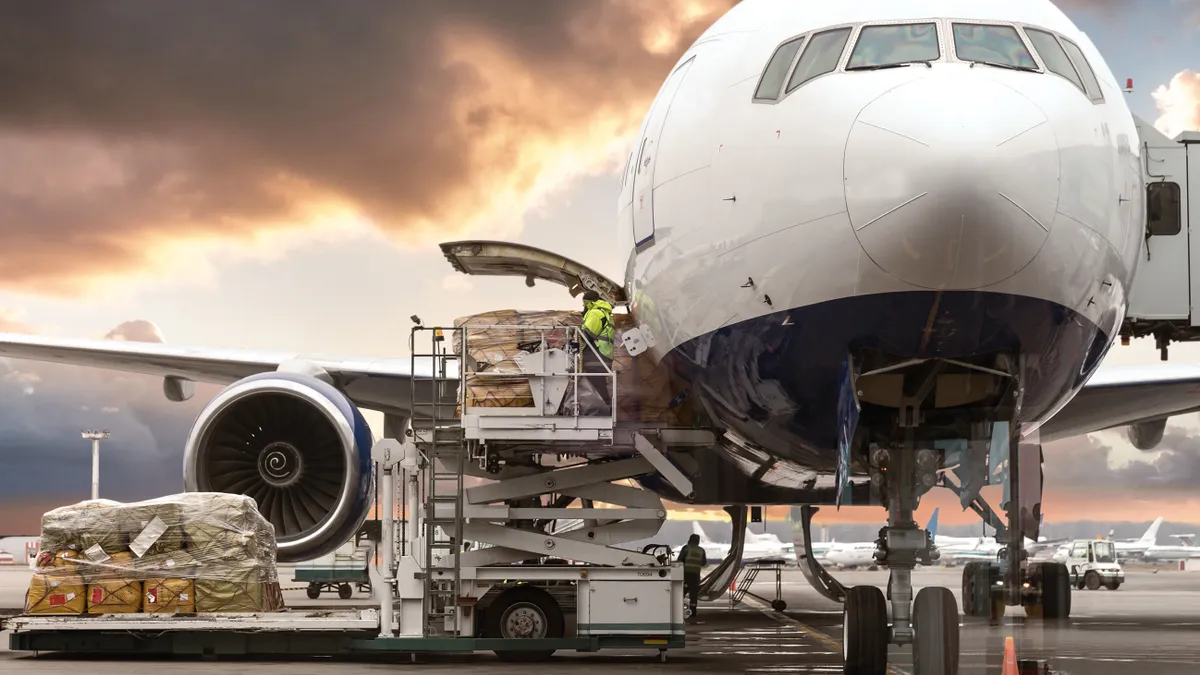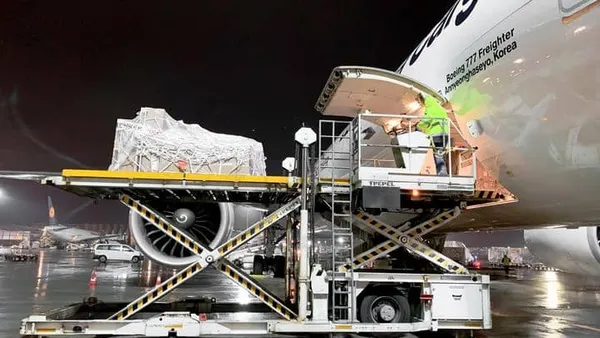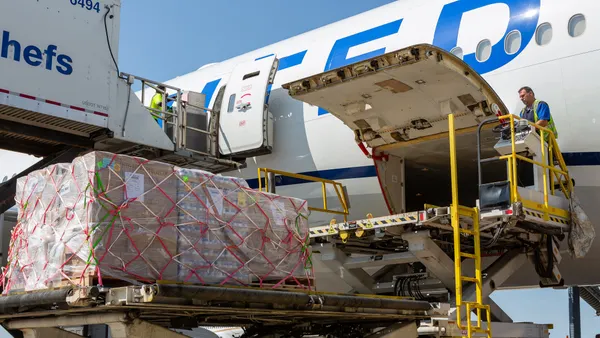Editor’s note: This story is part of an ongoing series diving into the opportunities and challenges supply chains face in 2023. Read the rest of the series here.
Lower rates and increased air cargo capacity may benefit shippers in 2023, as carriers contend with lower demand, according to industry analysts.
More businesses came to rely on airfreight during the pandemic as a way to circumvent lengthy delays caused by port congestion. But with ocean congestion clearing, demand for pricier air cargo services has declined.
“As the year continued through 2022, the demand started diminishing to a more realistic level,” Jack Burt, vice president of U.S. cargo at charter company Air Partner, told Supply Chain Dive. “Ocean container services started becoming more reliable [with] more available capacity in the ocean market, making it more attractive for shippers.”
Lower demand also comes as more capacity hits the market. Air cargo carriers have added freighter capacity, expanded routes and resumed passenger operations — a complete flip from previous years where capacity was strained.
That's led to a very competitive market, which is expected to provide shippers with more pricing and capacity options.
“Demand year over year is quite different ... it has decreased, and that’s not a bad thing,” Burt said. “Markets are coming out of an equilibrium, which should train users for lower cost for transportation and, hopefully, lower costs for goods, overall.”
Shippers to benefit from softening rates
Spot rates in 2021 catapulted to among the highest in history, but prices began leveling off in 2022 with softer demand and greater availability of capacity. Rates from China to North America, for instance, wrapped up last year at $6.76 per kilogram, down roughly 40% YoY, according to a Jan. 3 email update from Freightos.
“Overall capacity will continue to grow, and demand will, I think, decline,” said Xeneta’s Chief Airfreight Officer Niall van de Wouw. “That will have a downward pressure on load factors, and hence, rates, but I don’t expect a nosedive from a rates point of view, as we see on the ocean side. I think it will be more of a gradual decline.”
While the air freight industry is currently seeing a decline in YoY growth and spot rates, the turbulent market may shift again, van de Wouw said.
“We have seen the easing of rates to gradually continue,” he said. “With the big carve out, there’s not a lot of slack in the system, so if something happens, that gradual decline would bounce or even go up a little bit if something happens in your local markets.”
Shippers head back to the drawing board
Lower demand and greater capacity means that buying power has, once again, returned to the hands of shippers. But experts warn challenges may lay ahead as stakeholders look to find new carriers or renegotiate existing contracts to secure the best rates.
“There’s new airlines that have come up and been developed and opened in the last year, there are large freight forwarding companies and logistics companies that have opened up entire new divisions with owned or leased aircraft," said Burt of Air Partner. "So there’s going to be a lot of new choices for people that need to either ship something by air cargo, air charter, or even ocean or surface.”
A November market analysis from Xeneta’s Clive Data Services found that shippers are opting for more shorter-term air cargo deals amid market uncertainty.
“If rates are coming down, then people want to try and seize that,” Burt said. “Renegotiation is already in effect.”
Beyond capitalizing on short-term declines in rates, shippers are also taking new approaches around their long-term use of air cargo. Shippers need to work with partners to ensure that they’ve got the “right mix” of services, Matt Castle, vice president of air services at C.H. Robinson, told Supply Chain Dive.
“It really comes back to the fact that there is still supply chain disruption, there’s still a need for shippers to recalibrate in this ever changing marketplace,” he noted. “One of the big themes that obviously played out the last couple of years, and one of the things we’re working backwards now with a number of customers, is we had to really restructure or reestablish their expectations.”
Correction: This story has been updated to correct Jack Burt’s title.





















